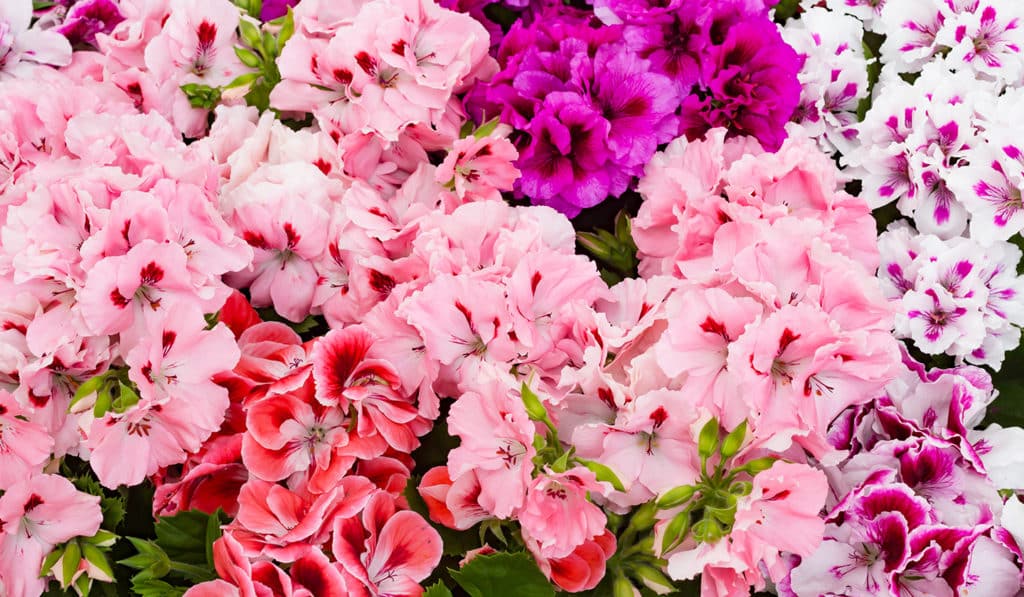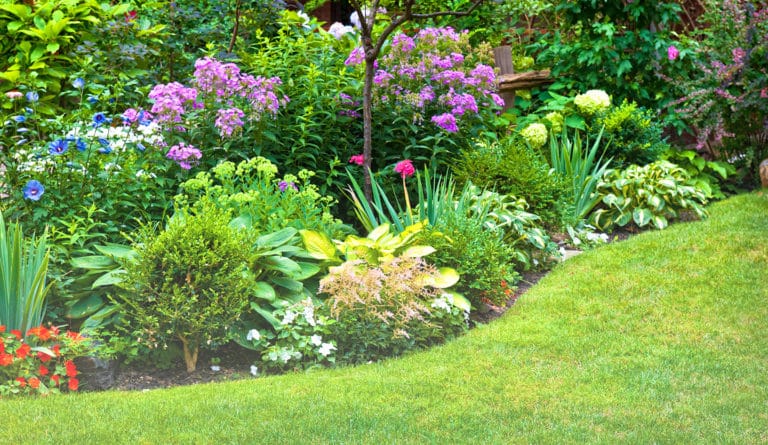
geranium
aka Pelargonium
Geraniums are true marathon bloomers, providing your garden with colourful flowers from Spring well into the Fall. They thrive in garden beds but also in pots on your porch. There’s even varieties that like to hang out in baskets.
variations
Annual geraniums (Pelargonium species) Perennial geraniums (Geranium species)
light
full sun
Annual Geraniums need full sun, except for Ivy Geranium which prefer some shade. Perennial Geraniums however can grow in sun or shade, depending on the variety. All types appreciate a little protection form the hottest midday sun.
water + feeding
not too thirsty
For annual Geraniums, check the soil weekly, watering when the top inch is dry. Newly planted Perennial Geraniums need their soil consistently moist (to encourage rooting) for the first growing season. Once established, Perennials generally survive on rainfall alone, unless you experience long periods of drought.
toxic
yes
Toxic for pets, causing rashes, low blood pressure, loss of appetite and general lethargy. If you have them indoors, keep away from pets who like graze.
size
they vary
Depending on the variety, Geraniums grow 4 to 48 inches tall and 6 to 36 inches wide.
pro tip
dead heads
“Deadhead” your Geraniums to maximize your blooms. When you see a Geranium bloom start to look brown and wilted, snip it or break it off with your hands. Follow your wilting bloom down to where it meets the main stem and break it off. Deadheading ensures your Geranium works hard constantly making new blooms. It’s a game-changer. Inspect and deadhead every two weeks, minimum. It only takes a couple of minutes.
fun fact
smells great!
Scented Geraniums have wonderful, zesty smells but it’s not the flowers so much as the fragrant leaves. These varieties are even edible and can add delicious flavours to meats, salads or even desserts. Make sure your variety is an edible kind before you get cooking!


beyond the basics
-
soil & potting
Perennial and Annual Geraniums agree. A nutrient-rich well-draining soil is best. If you’re planting in beds, improve soil drainage and quality by mixing 3 inches of Miracle-Gro® All Purpose Garden Soil into the top 6 to 8 inches of native soil. For best results when growing Geraniums in containers, fill pots with light and fluffy Miracle-Gro® Moisture Control Potting Mix. When planting in raised beds, mix garden soil and potting mix 50/50.
-
companion planting
Geraniums are natural pest repellers! They keep cabbageworms, earworms and Japanese beetles at bay. This makes them excellent bodyguards and friends to plants which are prone to these pests. Cabbage, corn, grapes and roses all benefit.
-
blooms
Geraniums are marathon bloomers from Spring to Fall, especially if you deadhead regularly. Blooms come in pink, purple, lilac, red, and white. There’s even bi-coloured varieties. Zonals sport the brightest colours. Regals are less bright but their flowers are larger and come in two–tone varieties.
-
pest control
Geraniums naturally repel many pests, but are prone to some, like Aphids (clusters of greenish-yellow little bugs) and Whiteflies (tiny bugs with white wings). Check under the leaves periodically. If you see these pests treat them with a safe pesticide like Ortho® Bug B Gon® ECO Insecticidal Soap.

troubleshooting
-
why aren’t my Geraniums blossoming?
Overfeeding of Nitrogen results in lots of lush vegetation but no flowers. Give your plants a thorough soaking to two or three days in a row, to help wash nutrients deep into the soil, past most of the roots. Stop fertilizing for the rest of the growing season.
-
why the yellow edges on the leaves?
Probably not enough food. Spray their foliage with liquid fertilizer like Miracle-Gro® Water Soluble Plant Food. Don’t exceed the instructions on the container. Feed every two weeks until the yellowing symptoms disappear.
-
why is my plant all spindly?
There’s a number of possibilities. It could be low light. A lack of deadheading and pruning could be the cause. Excessive feeding and or watering. Overcrowding forces your Geranium to grow up long and tall to get about the competition.
-
why are the leaves turning red?
Your Geranium is too cold. Geraniums do well in cooler temps than many other flowers, particularly the Regal varieties, but even they have their limits. If this is a potted plant, delay moving it outside until nighttime temperatures are regularly above 40 F (4C).
-
why are the buds Dropping Off?
This is most common with potted Geraniums, and it’s usually because the plant is too soggy. Find a drier spot, improve drainage if needed and wait longer between watering.



